Picture a winter garden transformed into a magical oasis, adorned with the exquisite beauty and intoxicating fragrance of gardenias. These elegant shrubs, with their velvety petals and lustrous foliage, have the power to captivate the senses even in the coldest months. But as frost settles in and temperatures plummet, the question lingers: Will my gardenias survive the freeze?
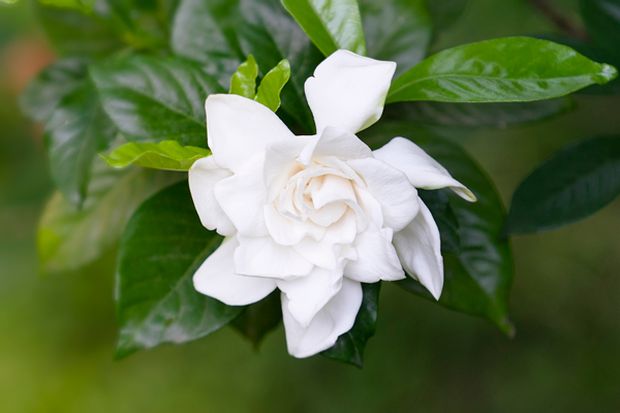
Yes although gardenias can struggle in freezing conditions. Protect them with mulch, coverings, or bring them indoors during frosty weather to increase their chances of survival.
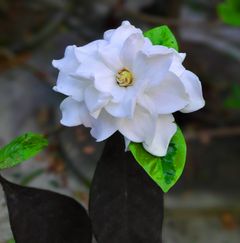
Fear not, for with a little know-how and the right precautions, you can safeguard your cherished gardenias and witness their resilience as they defy the winter chill.
Gardenias, with their captivating beauty and intoxicating scent, are known for their preference for warmer climates. Native to tropical and subtropical regions, these delicate shrubs may be vulnerable when exposed to freezing temperatures.
However, with proper care and a touch of winter protection, your gardenias can brave the cold and emerge stronger than ever.
One of the key factors in ensuring the survival of your gardenias during a freeze is preparation. As winter approaches, take proactive measures to shield your plants from the harsh elements.
Begin by providing a layer of mulch around the base of the shrubs. This protective layer helps insulate the roots, keeping them warm and preventing rapid temperature fluctuations.
If a frost or freeze is in the forecast, consider covering your gardenias with frost blankets or old bedsheets. These protective coverings act as a shield against the cold air, creating a microclimate that traps heat and protects the plants from frost damage. Be sure to secure the coverings firmly to prevent them from being blown away by strong winds.
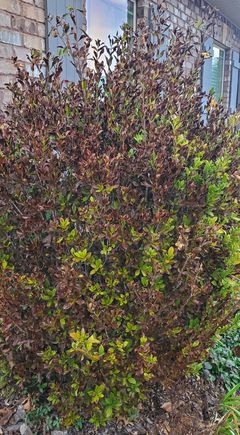
Watering also plays a crucial role in winter survival. While it may seem counterintuitive, it's essential to maintain adequate soil moisture during freezing conditions. Water the gardenias deeply before the freeze to ensure the roots are well-hydrated. This extra moisture helps insulate the roots and prevents dehydration.
In addition to these precautions, selecting the right gardenia varieties for your region can increase their chances of surviving a freeze. Some cultivars, such as 'Frostproof' and 'Kleim's Hardy,' are bred to withstand colder temperatures and can be more resilient in chilly climates.
With a little care and attention, your gardenias can weather the frosty conditions and continue to enchant you with their heavenly fragrance and stunning blooms. So, don't lose hope when the temperatures drop; instead, embrace the challenge and create a winter wonderland in your garden with these resilient and captivating gardenia shrubs.
What is the lowest temperature a gardenia can tolerate?
Gardenias are known for their delicate nature and sensitivity to cold temperatures. While they prefer a warm and mild climate, different gardenia varieties may vary slightly in their cold tolerance.
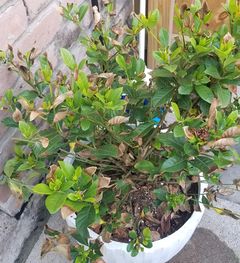
As a general guideline, most gardenias can tolerate temperatures down to around 20 to 25 degrees Fahrenheit (-6 to -4 degrees Celsius) for a short period. However, prolonged exposure to temperatures below freezing can cause significant damage to the plants.
It's important to note that gardenias are more susceptible to cold damage when they are in active growth, such as during the spring and summer months. During these periods, it's crucial to protect gardenias from freezing temperatures to prevent frost damage to the foliage, buds, and even the plant's root system.
If you live in an area with colder winters or are experiencing an unusually harsh freeze, it's advisable to take extra precautions to protect your gardenias. Covering them with frost blankets or burlap, using heat sources like string lights or candles, and applying mulch around the base of the plants can help provide insulation and minimize the risk of cold damage.
Remember, every gardenia plant is unique, and their cold tolerance can vary. Factors such as plant health, acclimation, and the duration of the freeze can all impact their ability to withstand low temperatures.
By understanding your specific gardenia variety and providing adequate protection during freezing conditions, you can increase the chances of your gardenias surviving and thriving even in colder climates.
Will gardenia come back after hard freeze?
Gardenias can experience significant damage or even die as a result of a hard freeze. The extent of their recovery after a freeze depends on several factors, including the severity of the freeze, the duration of exposure to freezing temperatures, and the overall health and resilience of the plant.
After a hard freeze, gardenias may exhibit signs of damage such as wilted or blackened foliage, brown or mushy stems, and bud or flower loss. In some cases, the entire plant may appear lifeless. However, gardenias have the potential to recover if the damage is not too severe.
To help your gardenia bounce back after a hard freeze, it's important to provide proper care and assistance. Here are some steps you can take:
- Assess the damage: Wait until the threat of frost has passed and temperatures have stabilized before evaluating the condition of your gardenias. Trim away any obviously dead or damaged branches, but avoid pruning healthy growth until you see new growth emerging.
- Provide TLC: Ensure your gardenias receive adequate water, as dry soil can add stress to plants that are already recovering from freezing temperatures. However, be cautious not to overwater, as soggy soil can lead to root rot. Maintain a balanced watering routine to support plant recovery.
- Apply fertilizer: Once new growth appears, you can provide a gentle boost to your gardenias by applying a balanced fertilizer specifically formulated for acid-loving plants. Follow the instructions on the packaging for the recommended dosage and frequency of application.
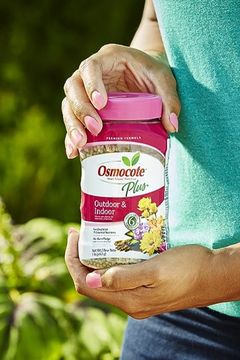
- Protect from future freezes: If you live in an area prone to freezing temperatures, consider taking preventive measures for future freezes. Cover your gardenias with frost blanket or bring potted plants indoors during cold spells to minimize the risk of damage.
Should I cover my gardenia?
Yes. Covering your gardenia during periods of freezing temperatures can provide some protection against frost damage. Gardenias are generally sensitive to cold and can suffer from frost injury, especially when exposed to prolonged freezing conditions.
Here are some considerations regarding covering your gardenia:
- Frost protection: Covering your gardenia can help shield it from the direct impact of frost. Use materials such as fabric frost blanket , burlap, or old bedsheets to create a protective barrier around the plant. Ensure that the covering reaches all the way to the ground to trap heat and prevent cold air from penetrating.
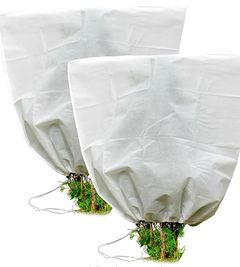
- Temperature threshold: It's essential to monitor the temperature thresholds at which you decide to cover your gardenia. Gardenias are more susceptible to frost damage when temperatures drop below 32°F (0°C). Consider covering the plant when the forecast predicts temperatures near or below this threshold.
- Duration of coverage: Keep in mind that covering your gardenia should be a temporary measure during periods of freezing temperatures. It's important to remove the covering during the day when temperatures rise above freezing to allow the plant to receive light and air circulation.
- Proper ventilation: When covering your gardenia, ensure that there is enough space or ventilation around the plant to prevent excessive humidity and moisture buildup, which can contribute to fungal diseases. Avoid tightly wrapping the covering around the foliage to allow for proper airflow. For this purpose, I can't recommend enough using a protected untight shelf that can be kept outside and still it will protect your pots from winds and frosts, yet your gardenias will receive the right amount of humidity. Since I started using it, I noticed my plants to become less witted and less stunt too.
- Mulch protection: Applying a layer of organic mulch around the base of your gardenia can provide additional insulation and protect the root system from cold temperatures. Mulch helps retain soil moisture and regulates soil temperature, creating a more favourable environment for the plant.
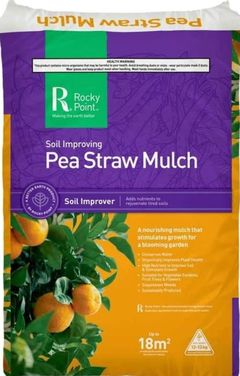
Will my gardenia survive a freeze?
Freezing temperatures can be a cause for concern when it comes to the survival of your beloved gardenias. As a gardener who has experienced the apprehension and uncertainty that comes with the arrival of frost, I understand the desire to protect these delicate beauties.
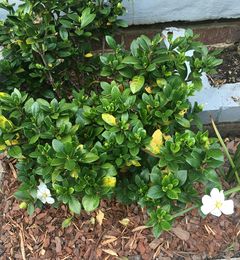
Let me share with you some valuable insights and personal experiences that will help you navigate through the freeze and ensure the survival of your cherished gardenias. When faced with a freeze, it's crucial to assess the current state of your gardenias.
Are they well-established plants or recently transplanted ones? Well-established gardenias have a higher chance of surviving a freeze as they have developed a stronger root system and are more acclimated to the environment. On the other hand, newly planted or young gardenias may be more susceptible to frost damage.
To provide your gardenias with the best chance of survival, it's essential to prepare them before the freeze arrives. One effective method is to apply a layer of organic mulch around the base of the plants. This will help insulate the roots and protect them from the extreme cold.
Additionally, consider covering your gardenias with frost blankets or burlap to shield them from the harsh elements. These protective coverings create a microclimate around the plants, trapping heat and preventing freezing.
I remember one particularly cold winter when a sudden freeze threatened my gardenias. Acting quickly, I covered them with frost blankets and placed some small heat sources, such as string lights or candles, near the plants to provide additional warmth. This simple technique helped me safeguard my gardenias and ensure their survival through the freezing temperatures.
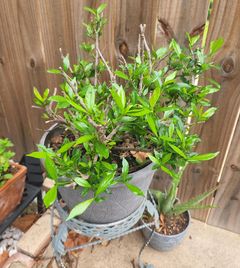
It's important to note that despite taking precautions, severe and prolonged freezes can still pose a risk to gardenias. In such cases, even with our best efforts, some damage may occur. But don't lose hope! Gardenias have a remarkable ability to bounce back. Once the freeze has passed, carefully assess the condition of your gardenias. Prune any damaged or dead branches, providing a fresh start for new growth to emerge.
Remember, as a gardener, we are constantly learning and adapting to the challenges nature presents. While freezes can be concerning, they also provide an opportunity to deepen our understanding of our plants and their resilience.
By implementing protective measures and offering the necessary care, you can increase the chances of your gardenias not only surviving a freeze but thriving in the face of adversity.
Final thoughts
In conclusion, protecting your gardenia during a freeze can increase its chances of survival and minimize frost damage. By taking proactive measures such as covering the plant, monitoring temperature thresholds, and providing proper ventilation, you can help safeguard your gardenia from the harsh effects of freezing temperatures.
Remember to remove the covering during warmer periods to allow for light and airflow. While gardenias are sensitive to cold, they can show resilience and bounce back after a hard freeze with proper care and attention. Keep a close eye on your gardenia, provide necessary post-freeze care, and remain hopeful for its recovery and the return of its beautiful blooms.
